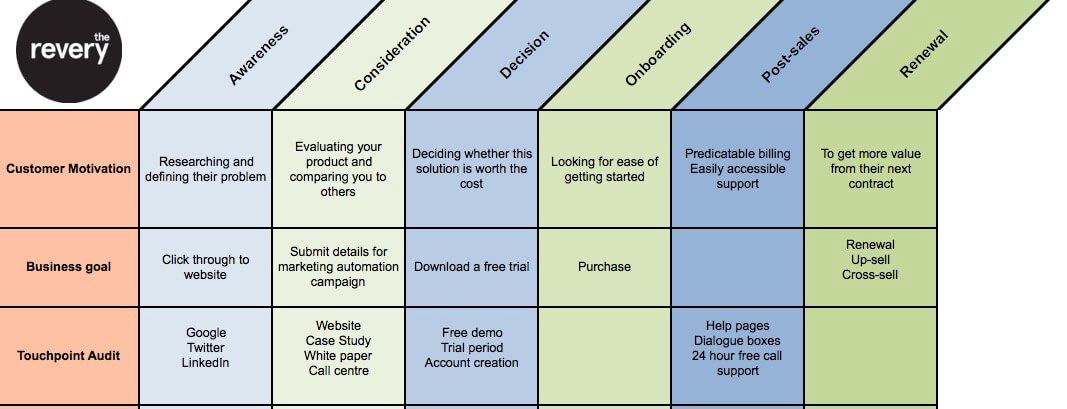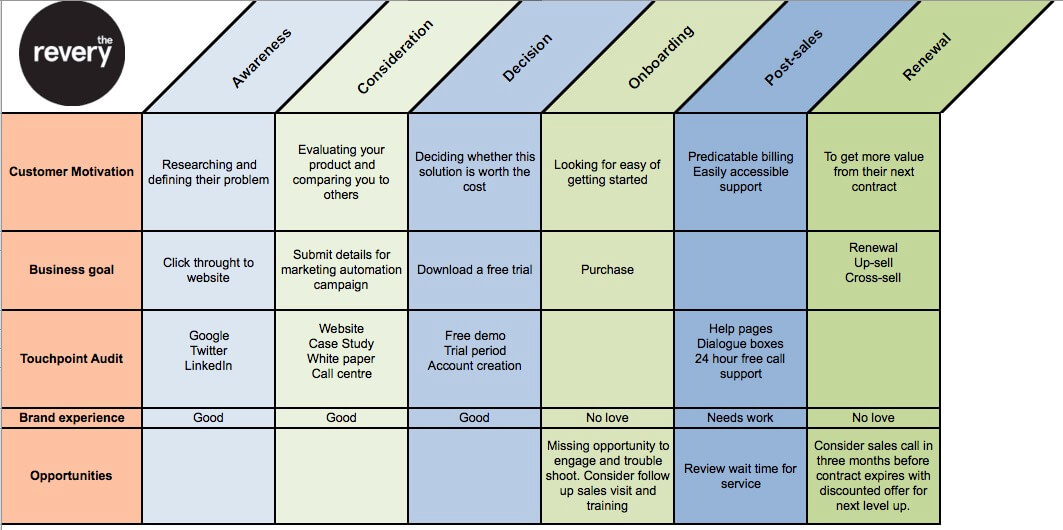If you’re a SaaS company, you know your customers. Your product was probably developed because you knew exactly what your customers were after. The success of your company is also dependent on your customers. You need people talking about you on social media, recommending you to colleagues or friends and basically shouting your name from the rooftop.
To get customer advocates like that isn’t just a matter of creating great content and hoping it resonates. You need to match the right content and delivery channel to your customers at each stage of their journey. You need to understand the path that customers take to research you, purchase from you and stay with you.
What you need is a map. And a nice big compass.
Customer journey mapping is, quite simply, eye-opening. It’s simultaneously a satellite image and a magnifying glass.
It will show you in broad strokes how your customers are travelling to you, interacting with you and, perhaps, where they’re leaving you.
Customer journey mapping will show you at every single touchpoint, how you’re interacting with customers and how your brand is being presented.
A good customer journey map will highlight where you can scoop up your customers, hold them tight and make them feel like a million bucks. It will also highlight missed opportunities to convert or retain them. It shifts your businesses focus away from a single transactions to a lifetime of recurring business.
Without a customer journey map you might as well throw random bits of content in the air and hope someone you like will catch them.
So how do you make a customer journey map that will show you the way? Set some clear goals before you start about what you want to achieve from the mapping process. Such as…
-
Finding gaps in your customer knowledge
-
Attributing content to each customer stage
-
Auditing your brand consistency
The next stage is to plot out the major steps your customers will take in their entire relationship with you. Remember their journey starts before you first talk to them and doesn’t stop at the point of purchase.
Most SaaS companies will follow a similar pattern to this:

The second step is to understand the customer motivation at each point. Are they researching and defining their problem? Comparing you with others? Deciding whether your solution is worth the cost?
Then add your business goals at each point. It’s always interesting to see if your goal matches the customer’s motivation. If you’re trying to get them to subscribe to your newsletter when they just want to know how much you cost, there’s going to be a glitch in their experience.

Next, and this is the fun bit, conduct a Touchpoint Audit. A touchpoint is every interaction that you have with your customers. Which methods are you using to nurture these clients? Is it through advertising, social media posts, emails or downloadable content?

Don’t be afraid to dig deep. This is where you might start to find cracks in your map. It’s not uncommon to see gaping content holes in the map where nurturing activity should be. Especially at the renewal end. Once a customer has been on-boarded they can be abandoned and left feeling unloved.
Now it’s time to get real. Rate yourself by assessing the Brand Experience. Are the customer’s expectations of your brand being met at each stage? You might have a ‘How To Guide’, but does it truly represent your brand? Does the language suit your personality? And is it the information the customer is after?
Now that you can see the holes, know where you’re ignoring customers or not giving them what they want you can plot the Opportunity. Brainstorm what the experience how you should be. Dream big.
The result will be something like this…

The map is a moving beast. Your business will change and so will the market landscape so it should be reviewed at least twice a year. The good news is that most of the information you need to complete a map is at your fingertips.
It’s also a great excuse to get marketing, operations and sales together in a room. The different perspectives on each stage can be eye-opening for the entire team.




